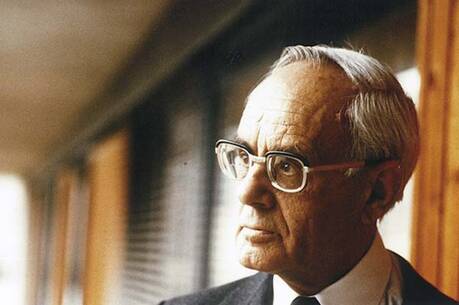Not About Redemption
Taking inspiration from Aleksandr Solzhenitsyn’s seminal One Day in the Life of Ivan Denisovich, Jens Soering has written an unblinking and harrowing critique of the American prison system and what he argues is the nation’s over-reliance on incarceration. Soering takes readers through a single day at the Brunswick Correctional Center in Virginia, from 4:20 a.m., when he wakes to the sound of a powerful toilet flushing in the 11 foot by 6 foot cell he shares with another man, until 7:45 p.m. when he climbs into his bunk and prays the last verse of Psalm 142: “Lead us out of our prison, that we may give thanks to your name. Then the just will gather around us, because you have been good to us.”
Soering is serving two life sentences for a double murder in 1985, which he maintains he did not commit. He has exhausted his legal options of appeal, and an effort to have him remanded to his native Germany, where his case is closely followed, was unsuccessful. But One Day in the Life is not about Soering’s case, or wrongful imprisonment or DNA exonerations. Instead it is a clear-eyed and methodical brief against America’s use of mass incarceration and against the very notion of imprisonment as an effective method for rehabilitating people who break the law.
The United States locks up 751 of every 100,000 of its people. Germany locks up 96 for every 100,000. A similarly striking gap appears in the rest of western Europe. Like Michelle Alexander in The New Jim Crow, Mass Incarceration in the Age of Colorblindness, Soering argues that the United States has been on a prison binge since the 1970s. According to the Pew Center on the States, the U.S. prison population grew by 700 percent between 1970 and 2005, compared to a 44 percent growth in the nation’s population as a whole. We had 1.5 million people in prison in 2009 and 7.2 million involved in the criminal justice system, according to the Bureau of Justice Statistics. In 1980 those numbers were 300,000 and 1.8 million respectively.
In literate, at times wry prose, Soering argues that this policy is not working. He constructs a searing brief against a system he says is corrosively corrupting to prisoners and corrections personnel alike, is counterproductive to public safety and the health of society and is a tremendous waste of money.
But other books have made those arguments before. What makes One Day in the Life a valuable addition to literature on prison is its hybrid of prison memoir, social critique and inside-the-gates reporting. He challenges Christians to rethink our basic commitment to punishment, retribution and penance.
Soering explains prison as relentlessly dehumanizing, a steady river of insults and affronts, a caged-in way of being that makes honesty or virtue difficult. Tellingly, guards have less regard for the prisoners who try to follow the rules, who try to better themselves or who complain about infractions. He tells how he stopped listening to music or watching television 12 years ago, because the flickering glimpses of his former life were too painful. “Every aspect of it reminded me in some way of what I’d lost,” he writes. He is a man shut down, withdrawn from emotion. And he explains that most other prisoners are as well, anesthetized as they are by music videos, abandoned by family or other visitors as their sentences drag on, exposed to rampant rape and sexual coercion, able to form no true friendships and forever at risk of breaking some capricious regulation. Long-term prisoners are in no shape to rejoin society upon their release. Prostitution is tolerated; solitary confinement in which prisoners quickly lose their sanity is widely used; and graft among correctional staff is common.
All this is in a model prison, one in which prisoners have considerable freedom of movement. Soering sees the whole operation as fundamentally corrupt and corrupting, from the chronically under-available addiction and counseling services to the laughably meager offerings of G.E.D. classes or other education for a population with huge numbers of illiterate people.
Soering’s eye is keen. He documents in detail the shrinking size of prisoner meals in the facilities in which he has been incarcerated—the Virginia Department of Corrections spends just 61 cents on each meal—and the attendant hunger prisoners carry throughout the day. Most use the pennies they earn in jobs in the laundry or workshop to supplement their diet at the overpriced and privately-run for-profit commissary. “With every meal on every tray, society reminds us of how much it despises us,” he writes.
Soering, a man with a keen mind and no one to talk to, has had a lot of time to think. His analyses of the debasement of incarceration and the cynicism of unfunded, tiny but widely heralded prison reforms are difficult to read. While Soering has kept himself alive and has clung to his humanity through a disciplined practice of centering prayer, this is not a story of a soul released. This is not a prison memoir about redemption or about finding joy in an unlikely place or the ennobling nature of suffering. It is a shout from the depths—one worth reading.
Soering is the author of four other books, including The Way of the Prisoner, The Church of the Second Chance, An Expensive Way to Make Bad People Worse and The Convict Christ. His articles have appeared in America.
This article also appeared in print, under the headline “Not About Redemption,” in the December 10, 2012, issue.







